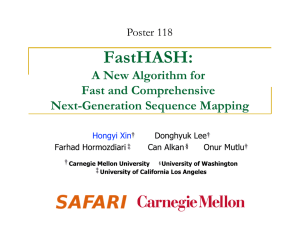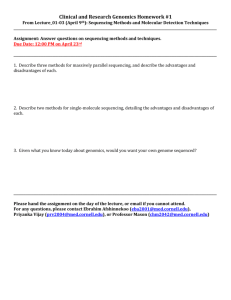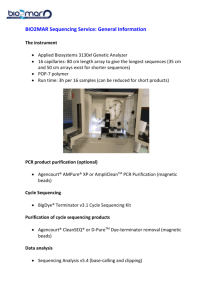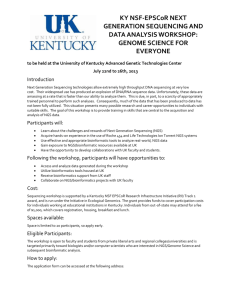Supplementary material Figure 1. Schematic outline explaining the
advertisement
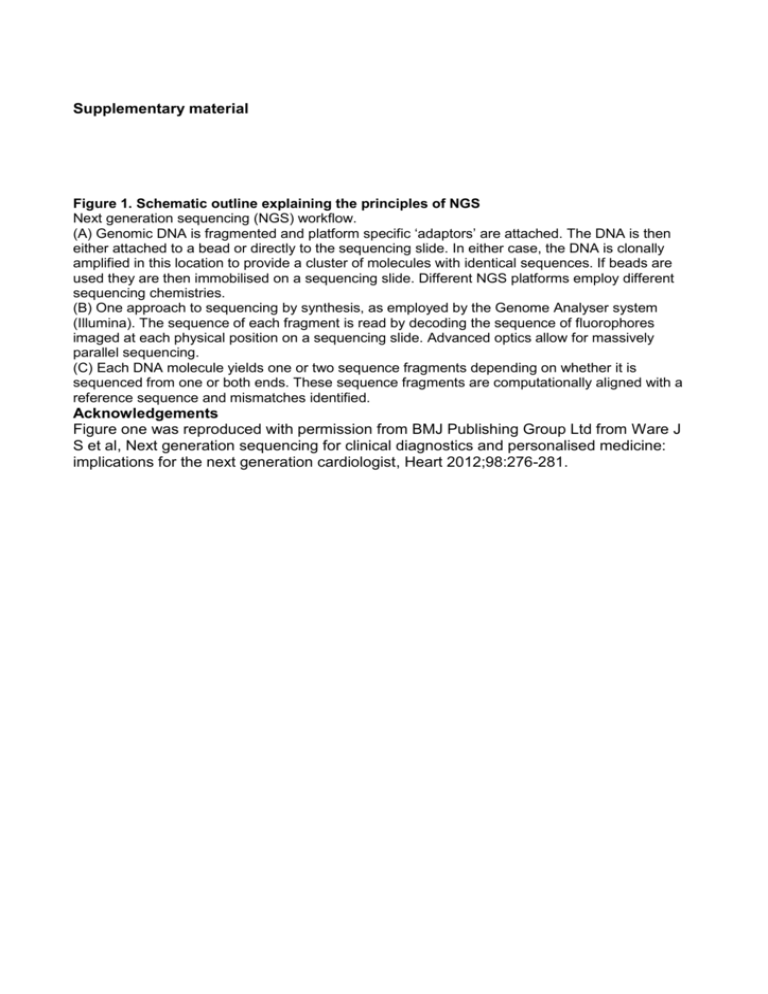
Supplementary material Figure 1. Schematic outline explaining the principles of NGS Next generation sequencing (NGS) workflow. (A) Genomic DNA is fragmented and platform specific ‘adaptors’ are attached. The DNA is then either attached to a bead or directly to the sequencing slide. In either case, the DNA is clonally amplified in this location to provide a cluster of molecules with identical sequences. If beads are used they are then immobilised on a sequencing slide. Different NGS platforms employ different sequencing chemistries. (B) One approach to sequencing by synthesis, as employed by the Genome Analyser system (Illumina). The sequence of each fragment is read by decoding the sequence of fluorophores imaged at each physical position on a sequencing slide. Advanced optics allow for massively parallel sequencing. (C) Each DNA molecule yields one or two sequence fragments depending on whether it is sequenced from one or both ends. These sequence fragments are computationally aligned with a reference sequence and mismatches identified. Acknowledgements Figure one was reproduced with permission from BMJ Publishing Group Ltd from Ware J S et al, Next generation sequencing for clinical diagnostics and personalised medicine: implications for the next generation cardiologist, Heart 2012;98:276-281.




